2022
Systems Approaches to Cancer Biology (SACB’22) – Woods Hole
Two of my research students, Caitlin Strassburg and Fareeda Abu-Juam were chosen to be two of only 8 SACB fellows in 2022. This secured them a full ride to the conference, along with mentorship and amazing networking opportunities. We had a blast in beautiful Woods Hole.

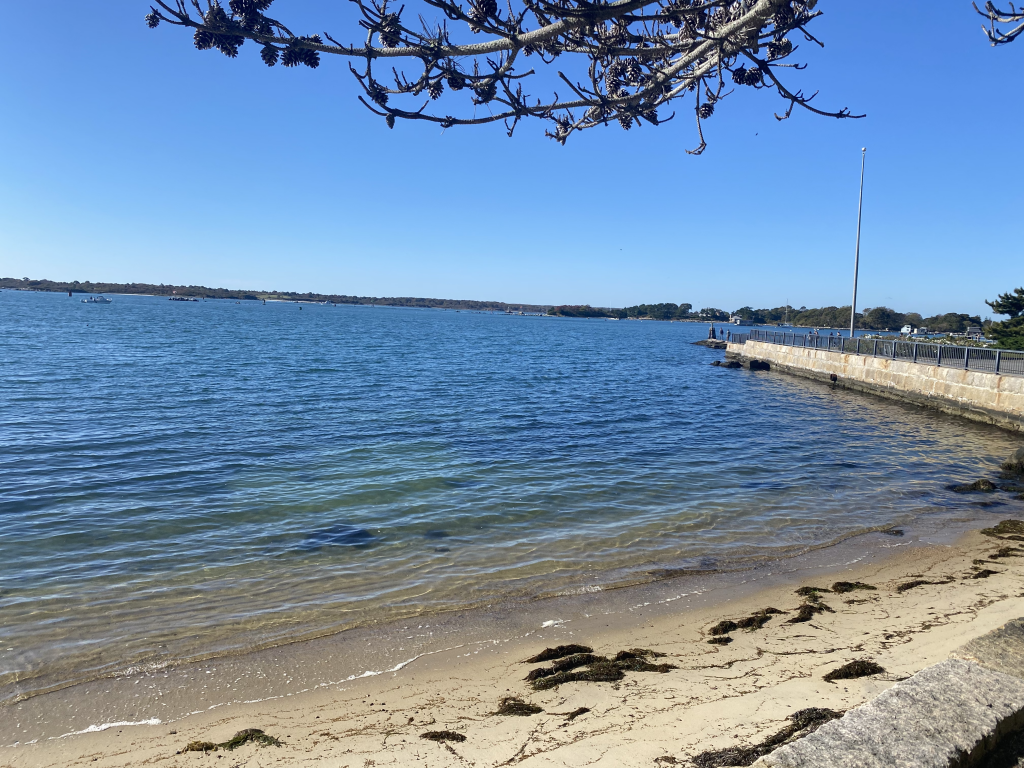
Winter Q-Bio: Quantitative Biology on the Hawaiian Islands
This year I had the privilege to take my entire IS lab to the Winter Q-Bio conference in Hawaii.
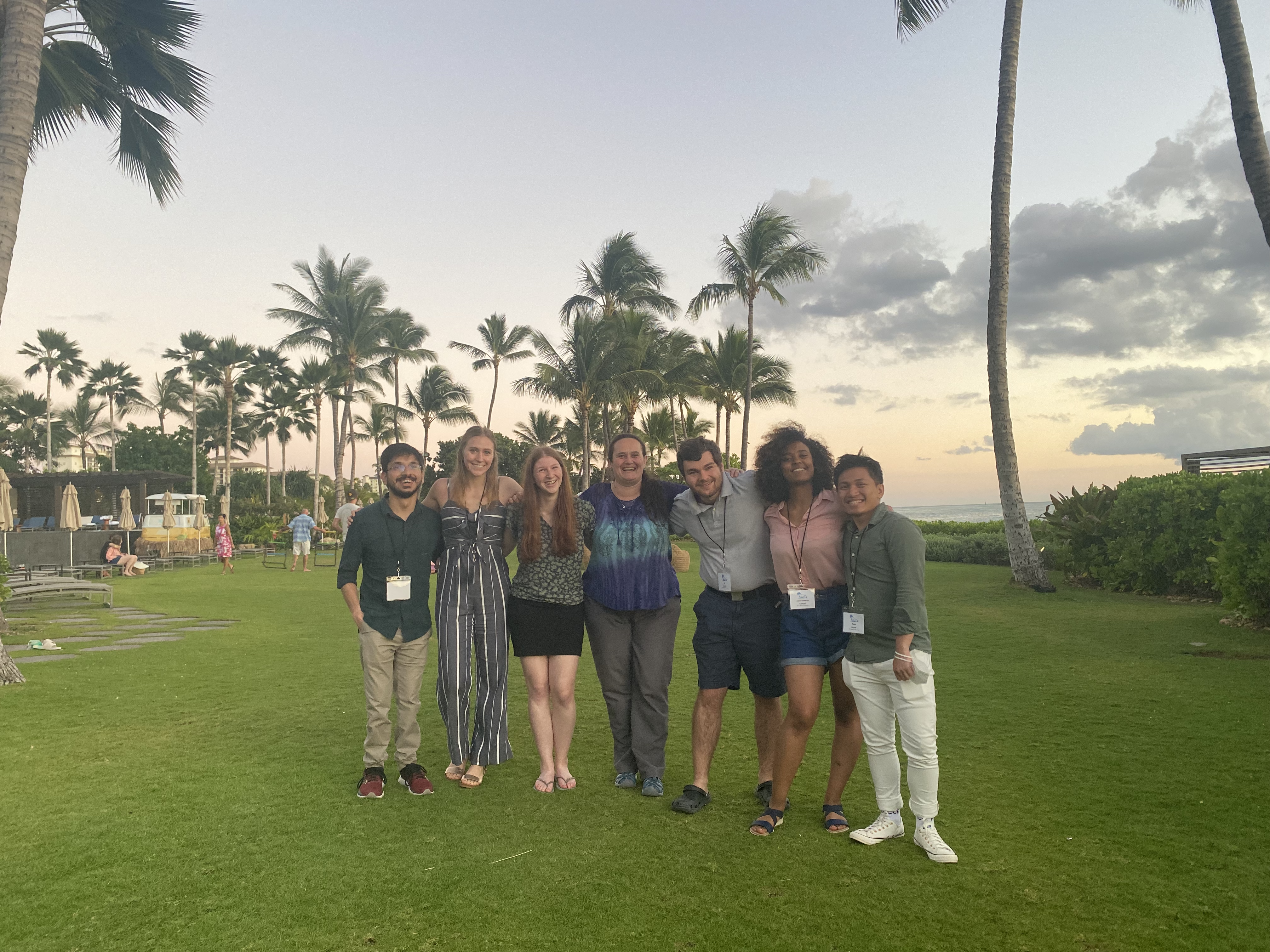
Left to right: Arnav, Emma, Andrea, Erzsébet, Ian, Aelon, Thinh
The conference was both a much needed reset after a few challenging pandemic years, and a phenomenal way to rekindle our interest and awe in computational, systems and synthetic biology research. The enthusiasm of our students cannot be understated. They were there at every session without fail, asked questions in a very large audience setting and generally got mistaken for graduate students until then corrected this misconception. They talked to everyone; I do not believe there was a single systems biology lab in attendance in which nobody knows about the college of Wooster. They networked like professionals, made contacts and one student got a full-time lab technician job as a result. We were all inspired, our research reframed by yet-unpublished information and potential new directions.
In short, the experience was a priceless learning opportunity for us all, and I firmly believe my students learned more holistic cell biology, computational biology and physiology during this one week than they typically do in several weeks of standard course work.
Our group included six students – let’s go in order of the photo, left to right:
- Arnav Bhatnagar, BCMB major ’22, secured APEX funding to present his poster on the mysteries of the mechanisms by which mesenchymal cells can resist senescence – a puzzle that gave us an excellent intellectual workout all year long :). Arnav was an engaging poster presenter, and our chief networker! He made friends with every lab, got a post-graduation job out of the trip in a large systems biology lab (____), and snagged a picture with a famous actor on the beach by being kind to them as they wrangled their toddler. Here is Arnav presenting his poster:

- Emma Davidson, Neurobiology major ’22, Withmore Williams Scholar. Emma presented her work on modeling the circadian rhythm and examining its effects on cell cycle speed. Her IS combines experiments on fruit fly development with Dr. Seth Kelly, and Boolean modeling of the mammalian clock linked to cell cycle in my lab. Emma always brought positive energy to every aspect of the trip, including saving us all from a very early start by hosting the lab at Casa Davidson in Columbus before the trip, and giving us heart failure by doing yoga on rock outcroppings. She also made friends with people across the conference. Here is Emma presenting her poster:
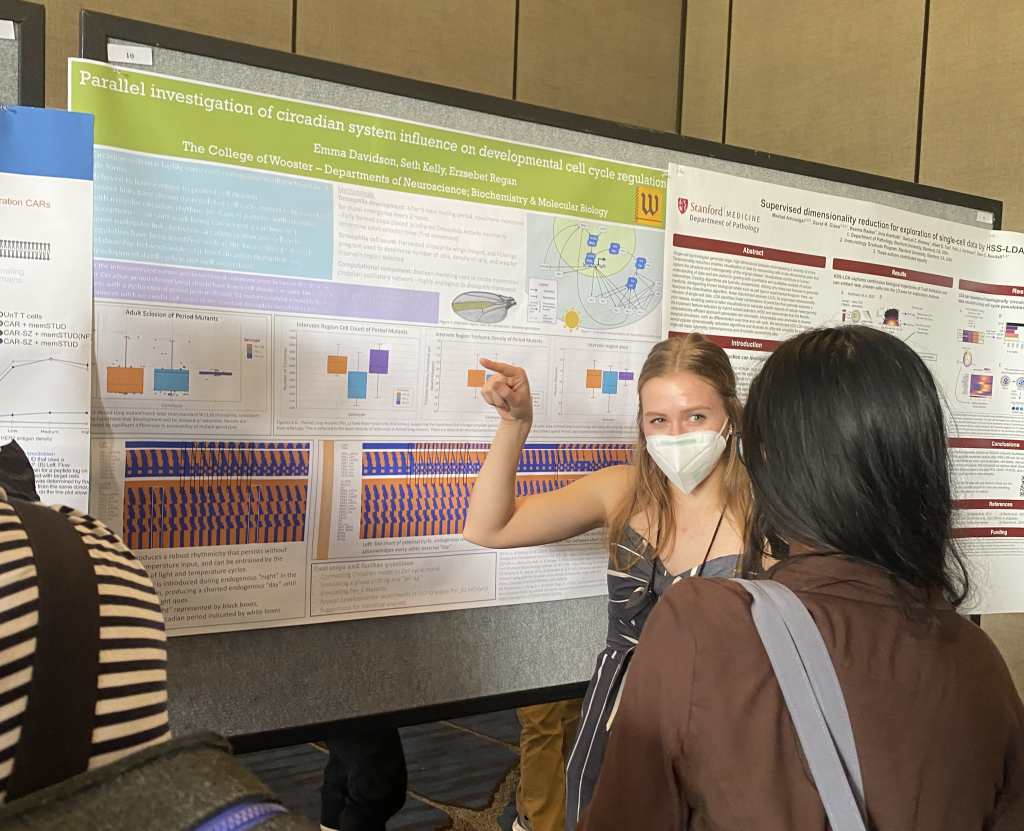
- Andrea Brown, BCMB major ’22, secured APEX funding to register and present at the conference. She told the story of her adventures in modeling apoptosis in yeast, a first for my lab as we ventured far away from the well-mapped mammalian network to the wild lands of yeast :). Andrea made friends with some of the most famous labs studying yeast senescence, and helped map out the future of her project, to be inherited by scores students to follow in her footsteps. She also named the lab after her seven deathly pathways that kill yeast, so we all knew our place in the universe. Here is Andrea presenting her poster:
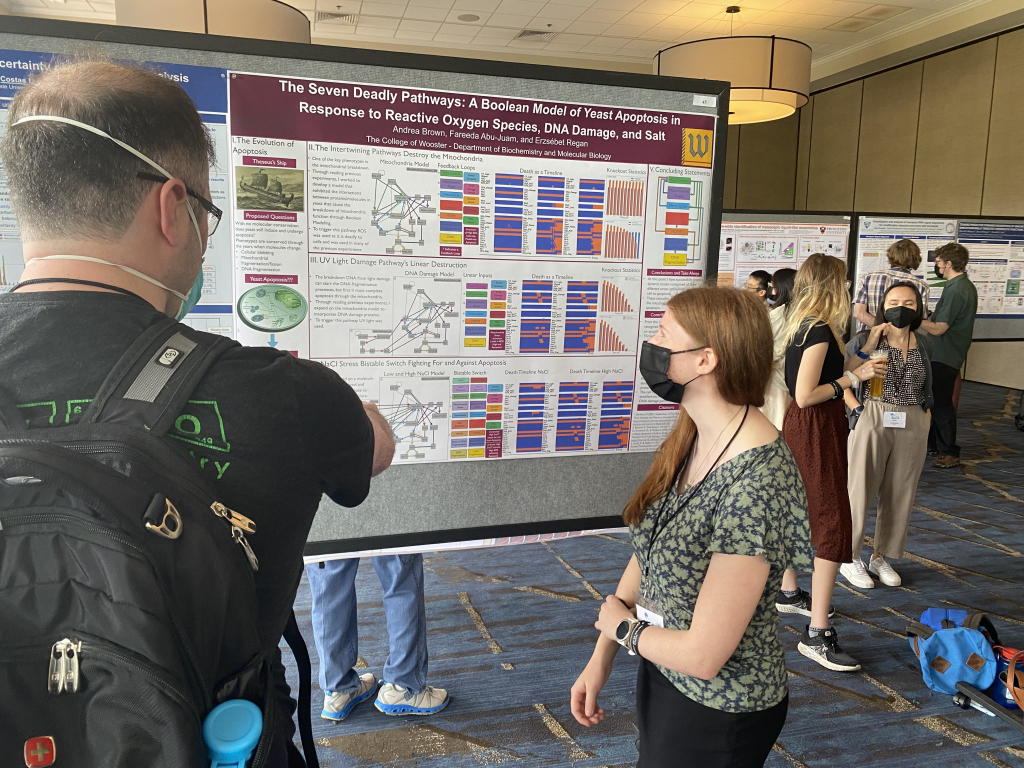
- Ian Zonfa, BCMB major ’22, was fully funded by a Copeland award. As a result, his goal was not to present but to expand the scope of his project by learning from the leading labs investigating the relationship between senescence and EMT. This he did — we all did by having some of the best conversations of the conference with both Galit Lahav’s lab and Uri Alon. Their insights completely reframed how we as a lab approach modeling senescence, and Ian was always game to strategize, try different approaches, and figure out how to clean up and publish our findings. He is now helping me draft a manuscript on EMT, with senescence to follow. Ian was also fantastic at always knowing way in advance how everything was going to go: where our terminal was, what time we needed a ride to the airport, where the session we all wanted to see was located. Here is Ian leading a group expedition toward knowledge (of what the ocean looks like from up high):
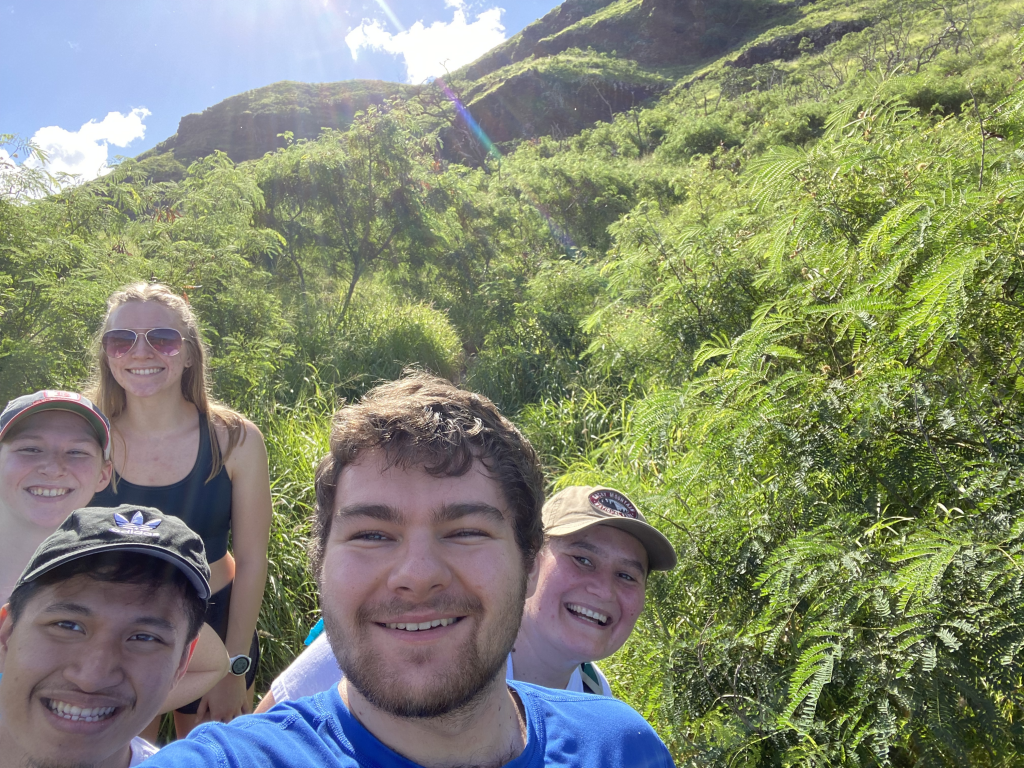
- Aelon Ketema Samuel, Neurobiology major ’22, presented her work on modeling mutation-related defects in neuronal differentiation. Aelon was excellent at making connections, she was a master of casually running into the most fascinating people and making friends. She was enthusiastic to learn all she could, and have a great time as she did so. Beach vs. mountain? Definitely beach, she joined Arnav on a more relaxing Monday soaking up the sun the troops trudging up a steep slope. Here is Aelon, presenting her work:
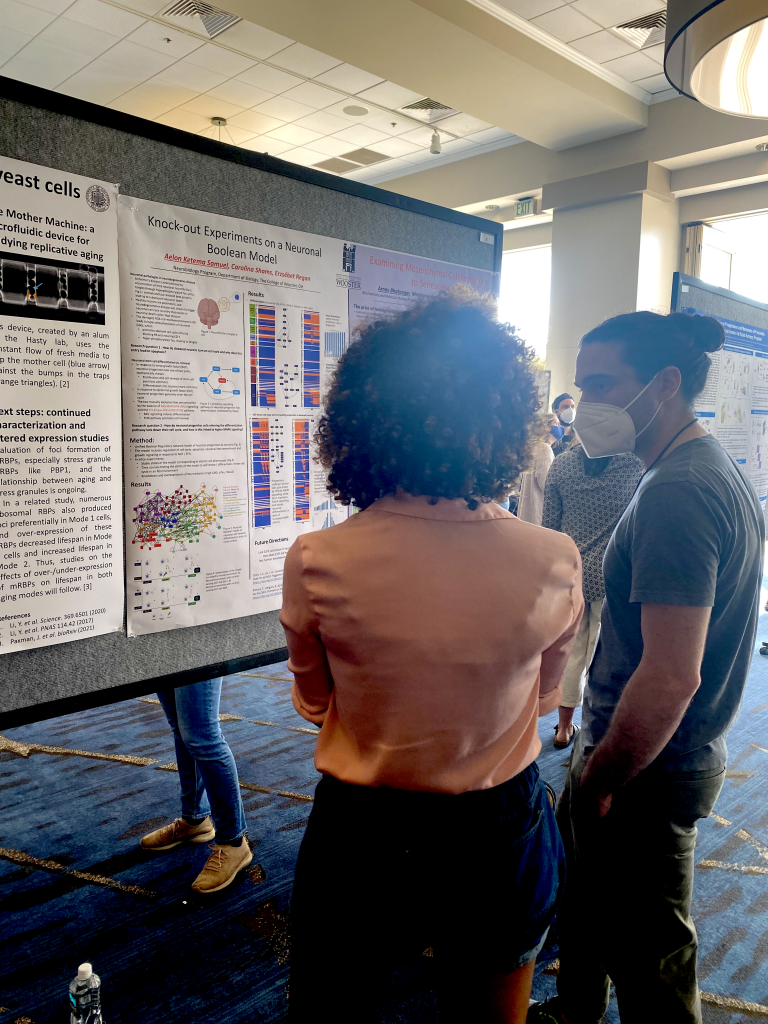
- Thinh Huynh, BCMVB major ’22, also secured APEX funding to present his work on modeling yeast metabolism to figure out the role of a mysteriously essential mitochondrial gene. Yeast can live without using its mitochondria: so why is this gene essential? Thinh figured out how to work with a flux balance model of yeast metabolism to investigate the role of this enzyme’s known metabolic targets. He found quite a few potential culprits outside of the electron transport chain that may explain the need for this protein. Thinh certainly lined up more lab work for himself and Dr. James West’s lab, where he did his experimental work. Thinh could be counted on to make great food (I hear), and to ask excellent questions at most sessions. I especially love the “wait, are you undergrads?” questions from big lab PIs :). Here is Thinh presenting his work:
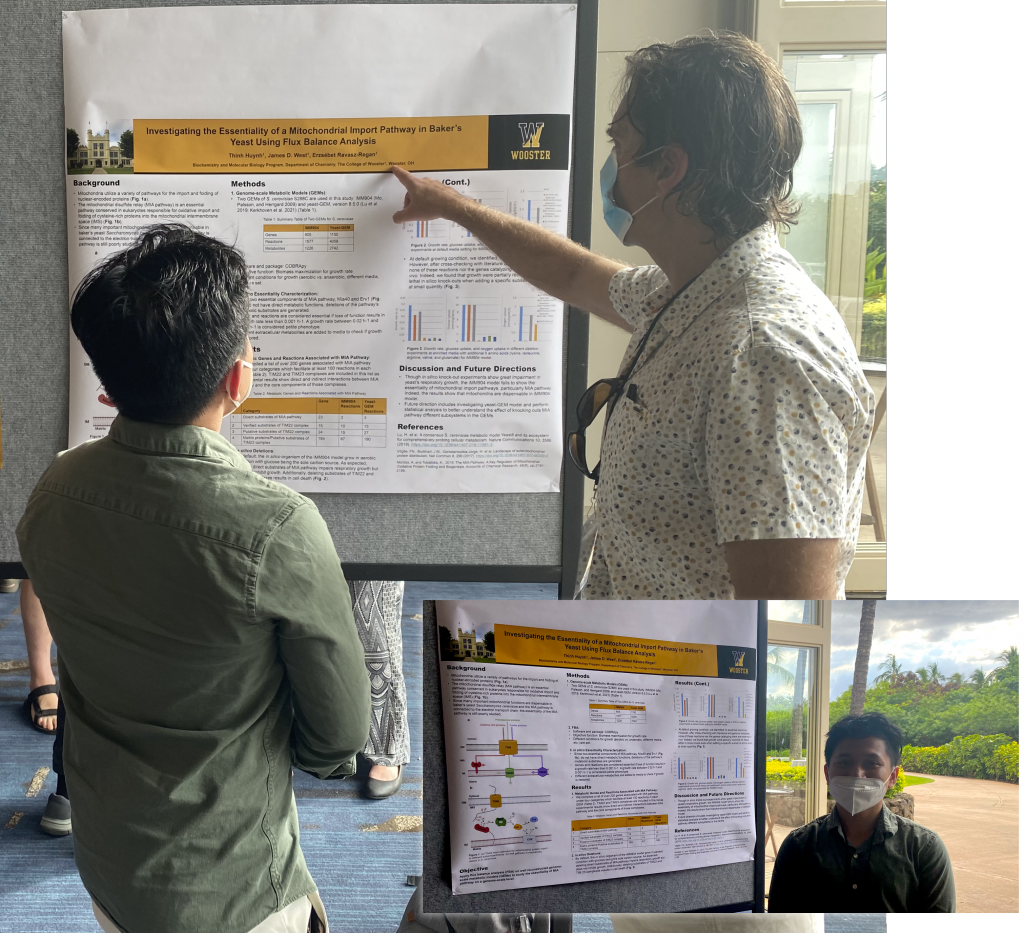
2021
NetBioMed’21 – Networks in Biology and Medicine (Networks’21 satellite)
- Marlayna Harris, BCMB major ’21. During this obnoxiously online year, Marlayna not only produced an amazing IS but also snagged a spot a the NetBioMed’21 satellite conference as one of the contributed speakers! She gave a phenomenal talk on modeling the relationship between epithelial to mesenchymal transition and cellular senescence. I sadly failed in my duties as an advisor and did not secure a screenshot of this event :(. Marlayna was the first student to bring together all our efforts to model mammalian epithelia, connecting two monster models into a single, working whole. By the end, her model had 230 nodes and thousands of links, and covered signaling modules on cell growth, cell cycle control, apoptosis, DNA damage response, two kinds of senescence, biomechanical signaling in response to the cell’s 3D environment, and the epithelial to mesenchymal transition. In 2o22 the next generation of IS students worked on this with a mixture of awe and grumbling. We nicknamed her model Godzilla. Here is the network, straight from her IS:
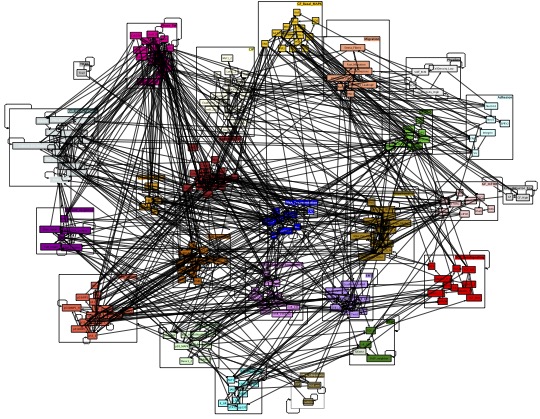
2020
NetBioMed’20 – Networks in Biology and Medicine (NetSci’2020 satellite)
- Bao Nguyen, Neurobiology major ’20. Instead of joining me in Paris for NetSci’2020, Bao’s plans for graduation and summer were brutally interrupted by the pandemic. This did not stop her from recording. the most amazing general audience video about her work. During the summer presented a visual poster, which generated a lively discussion with a modeling group engaged in a similar effort in modeling macrophages. Here is her amazing poster:
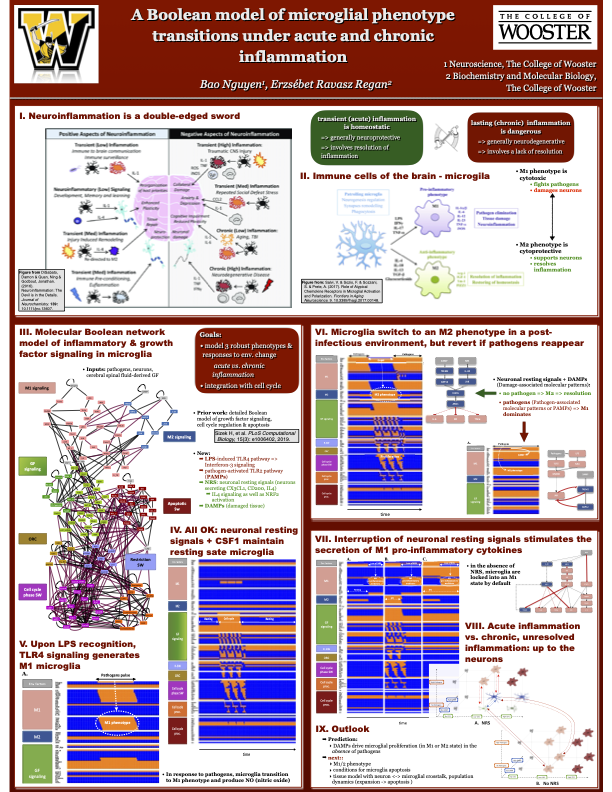
2019
NetBioReg’19 – Networks in Biological Regulation (NetSci’2019 satellite)
- Eric Guberman, BCMB major ’19.
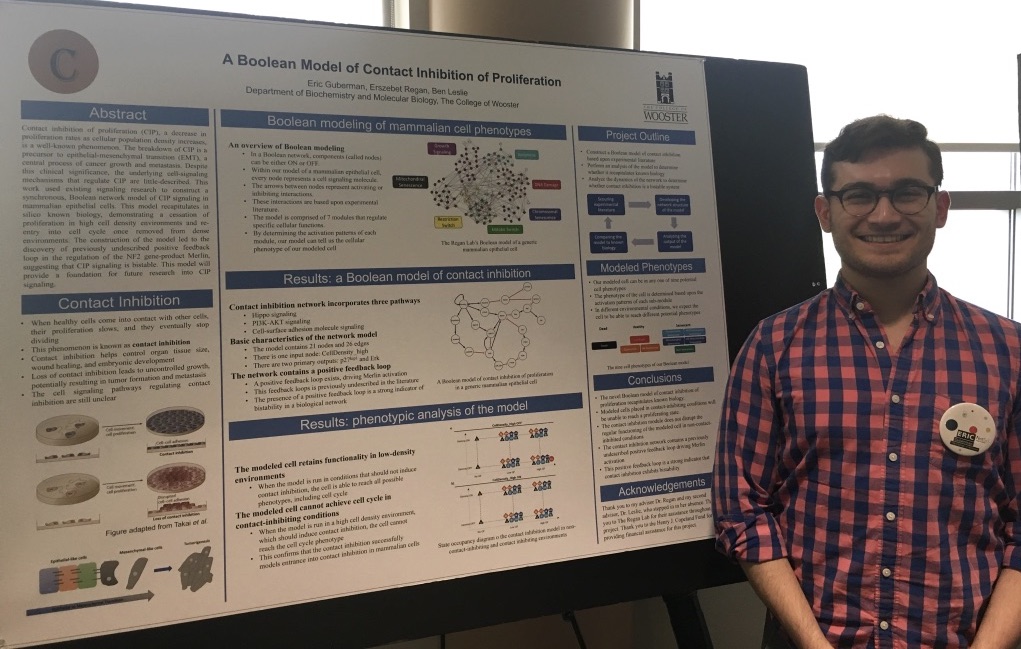
- Afton Widdershins, BCMB major ’19.
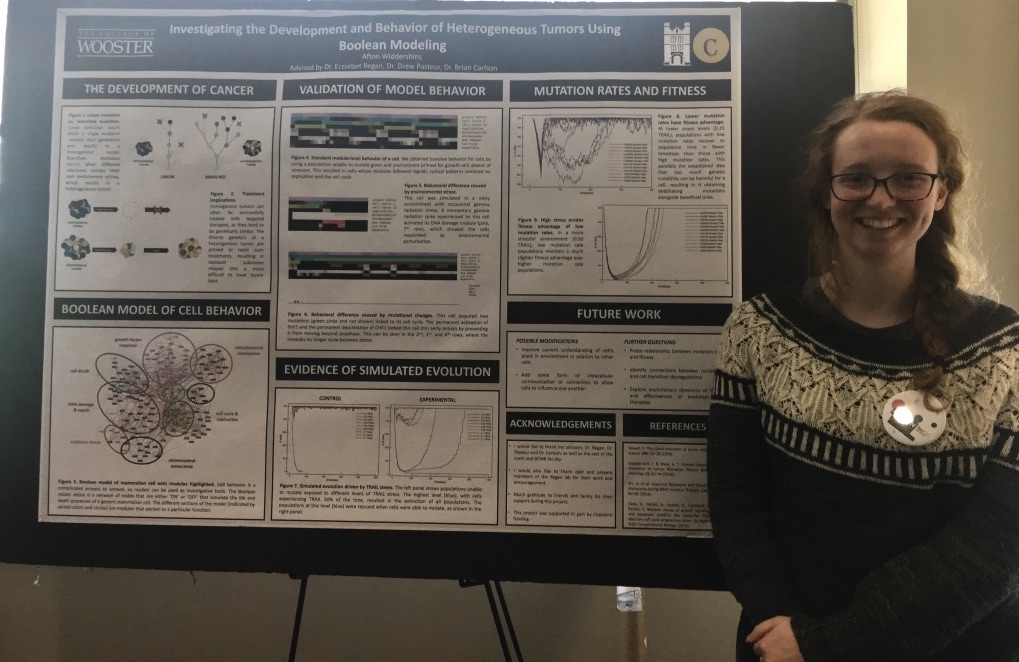
2018
RECOMB’18 – Research in Computational Molecular Biology
- Emma Schroeter, Neurobiology major ’19
- Caroline Obermeier, Biology major ’19
- Cam Elliot, BCMB major ’19

